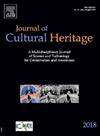Learning by modelling in H-BIM environment to develop a framework for restoration. Application to the stone cladding of Casa delle Armi of Luigi W. Moretti in Rome
IF 3.3
2区 综合性期刊
0 ARCHAEOLOGY
引用次数: 0
Abstract
The approach to architectural restoration within a BIM environment, i.e. the so-called H-BIM, although now essentially mandatory, still presents application challenges and methodologies that are not yet fully recognised. In this context, the restoration of Modern architecture is of particular interest, given the relative proximity in time of the construction of the buildings and the specific deterioration problems that these constructions typically face in an accelerated form.
The use of digital tools, which such modelling entails, not only effectively supports the restoration process, but also significantly interacts with the study and knowledge of the building.
This article focuses on the increase in knowledge associated with the modelling process. The aim is to demonstrate how the understanding of the building necessary for creating the model (learning to model), in addition to external bibliographical or documentary sources, as well as survey and in situ analysis, is increased the modelling activity itself, according to a process of “learning by modelling”.
The methodological proposal is presented and applied on a particularly significant case study: the “Casa delle Armi”, a building designed in Rome by the architect Luigi W. Moretti in 1933–36, during the Fascist regime. The building is entirely clad in thin slabs of Carrara marble. This marble cladding was the first and archetype of many similar applications carried out in the same years, and has suffered considerable deterioration, for which a particularly complex restoration process is currently underway.
In this article, the procedure used to obtain a historicised H-BIM model of the façade is described and discussed, as well as the advantages and the challenges associated with modelling. Furthermore, the limitations and possible developments of this approach are highlighted, emphasising the knowledge gained from the convergence of the two operational lines (learning to model and learning by modelling).
In the appendix, a brief reconstruction of the life phases of the “Casa delle Armi” is provided, integrating the outlined method with documentary and bibliographical information.

通过在H-BIM环境中建模学习,开发修复框架。Luigi W. Moretti在罗马军队之家石材包层的应用
BIM环境中的建筑修复方法,即所谓的H-BIM,虽然现在基本上是强制性的,但仍然存在应用挑战和尚未完全认识的方法。在这种背景下,现代建筑的修复尤其令人感兴趣,因为这些建筑的建造时间相对较近,而且这些建筑通常面临加速恶化的具体问题。这种建模所需要的数字工具的使用,不仅有效地支持了修复过程,而且还与建筑的研究和知识进行了显著的互动。本文的重点是与建模过程相关的知识的增加。目的是演示如何理解创建模型所必需的建筑(学习建模),除了外部书目或文献来源,以及调查和现场分析,根据“通过建模学习”的过程,增加建模活动本身。方法论建议被提出并应用于一个特别重要的案例研究:“Casa delle Armi”,这是由建筑师Luigi W. Moretti于1933-36年在法西斯政权期间在罗马设计的建筑。该建筑完全覆盖在卡拉拉大理石薄板上。这个大理石包层是同一年进行的许多类似应用的第一个和原型,并且遭受了相当大的破坏,目前正在进行特别复杂的修复过程。在本文中,描述和讨论了用于获得立面历史化H-BIM模型的程序,以及与建模相关的优势和挑战。此外,还强调了这种方法的局限性和可能的发展,强调了从两条业务线(学习建模和通过建模学习)的融合中获得的知识。在附录中,提供了“军队之家”生命阶段的简要重建,将概述的方法与文献和书目信息相结合。
本文章由计算机程序翻译,如有差异,请以英文原文为准。
求助全文
约1分钟内获得全文
求助全文
来源期刊

Journal of Cultural Heritage
综合性期刊-材料科学:综合
CiteScore
6.80
自引率
9.70%
发文量
166
审稿时长
52 days
期刊介绍:
The Journal of Cultural Heritage publishes original papers which comprise previously unpublished data and present innovative methods concerning all aspects of science and technology of cultural heritage as well as interpretation and theoretical issues related to preservation.
 求助内容:
求助内容: 应助结果提醒方式:
应助结果提醒方式:


